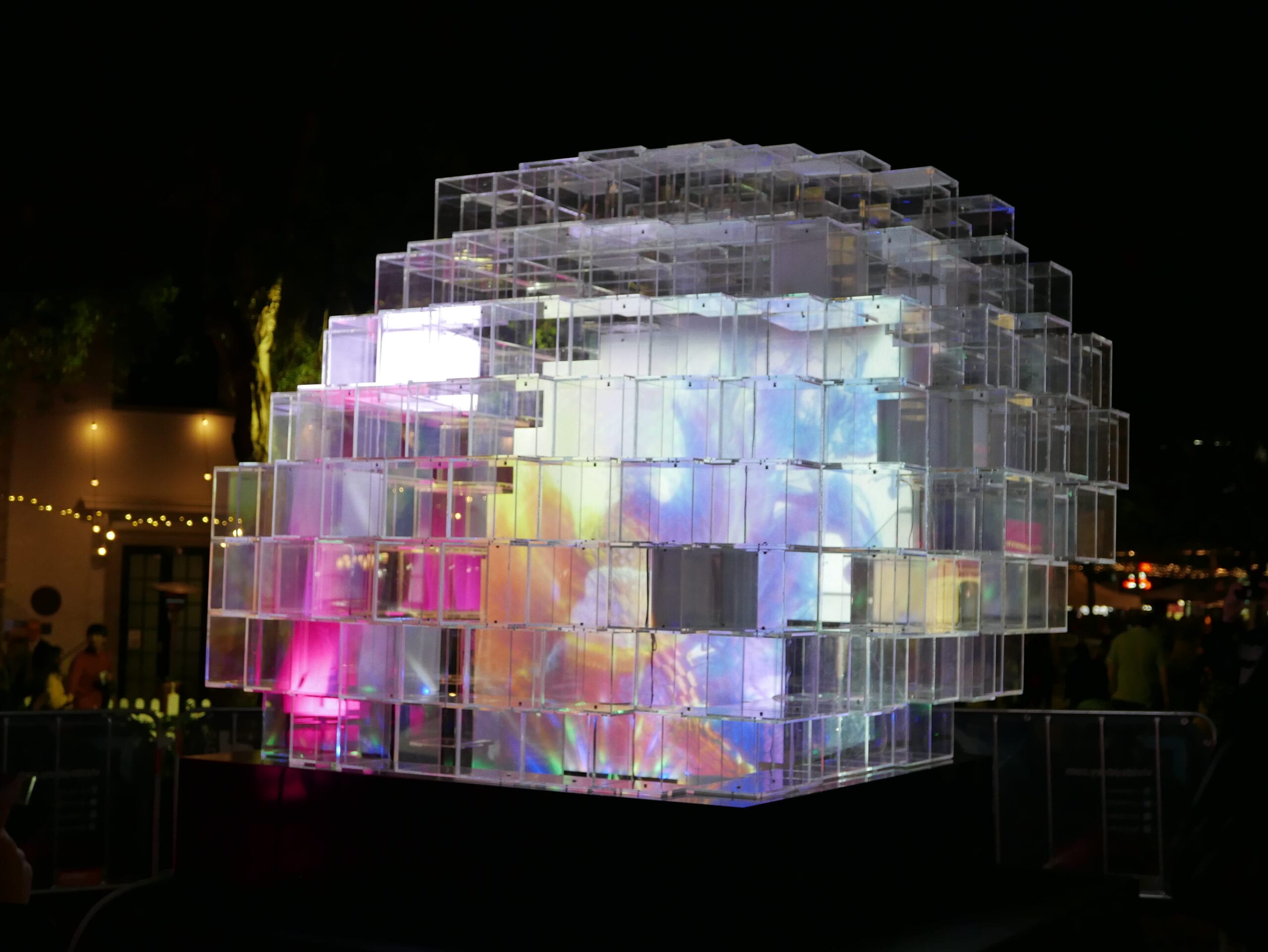“Light of Thoughts” brightened millions of faces at Vivid Sydney 2017. The interactive exhibit, a collaboration between ST and Australia-based artists, featured 270 acrylic cubes, built as a giant “brain” in pixel form that reacted and projected different animations and illuminations based on hand movements to captivate attendees.
Joe Peng, an architect of Lights of Thought, and Application Manager, Microcontroller Product Group, Australia and New Zealand at ST, discusses the collaboration to build this interactive art.
Why Vivid Sydney?
[Joe] Very simple, Super Daddy wanted to build a big vivid toy for his daughter. In all the kids’ eyes, Daddy is Superman who can do anything he wants to do. My 6-year-old daughter was the one and only tester in this project. She also contributed the idea “swipe light to brain.”
Is it possible for a “geek” to become an “artist”?
[Joe] Yes, art has been propelled to new heights by technology, the Internet, and a vast change in culture. The Internet of Things (IoT) – a strategic focus of ST, is everywhere now. Looking back on the history of “public art”, a geek like me sees 4 stages:
- Static art installation, (static statue)
- Dynamic art installation, (multimedia art installation)
- Interactive art installation, (with the help of a sensor, viewers can interact with installation)
- A connected art installation, (combining art, the Internet, and big data to do smart sensing and innovative interaction).
In my opinion, good artwork combines art with new technologies, which traditional artists know little about. Geeks know little about art. So why not mix the teams?
We partnered with local artists to assemble a strong team of 4 to build a connected and interactive art light installation.
What makes “Light of Thoughts” unique in Vivid Sydney 2017?
[Joe] Powered by ST sensor and IoT technology, Light of Thoughts has 4 unique features:
- It is a single connected-light installation that pushes all the data to the cloud. So multiple installations of Light of Thoughts, combined with weather input, could provide smart traffic prediction, for example. In fact, many companies showed great interest in it.
- The installation is also a built-in simulator; it can easily simulate and deploy light algorithms
- We used an Innovative interactive method. While I tried many different ST sensors, including motion sensors and MEMS microphone, we ultimately decided to use gesture control, which was fresh and fun.
- Light of Thoughts is a unique big brain consisting of 270 cubes that was not easy to make.
“Light of thoughts” not only caught the eyeballs of local media, it’s also reported by several foreign TV outlets outside of Australia.
[Joe] We may consider setting up a non-profit website “Geek learns ART,” that is aimed to educate and encourage Geeks and Artists to use the STM32 Open Development Environment to build their own art installation.
